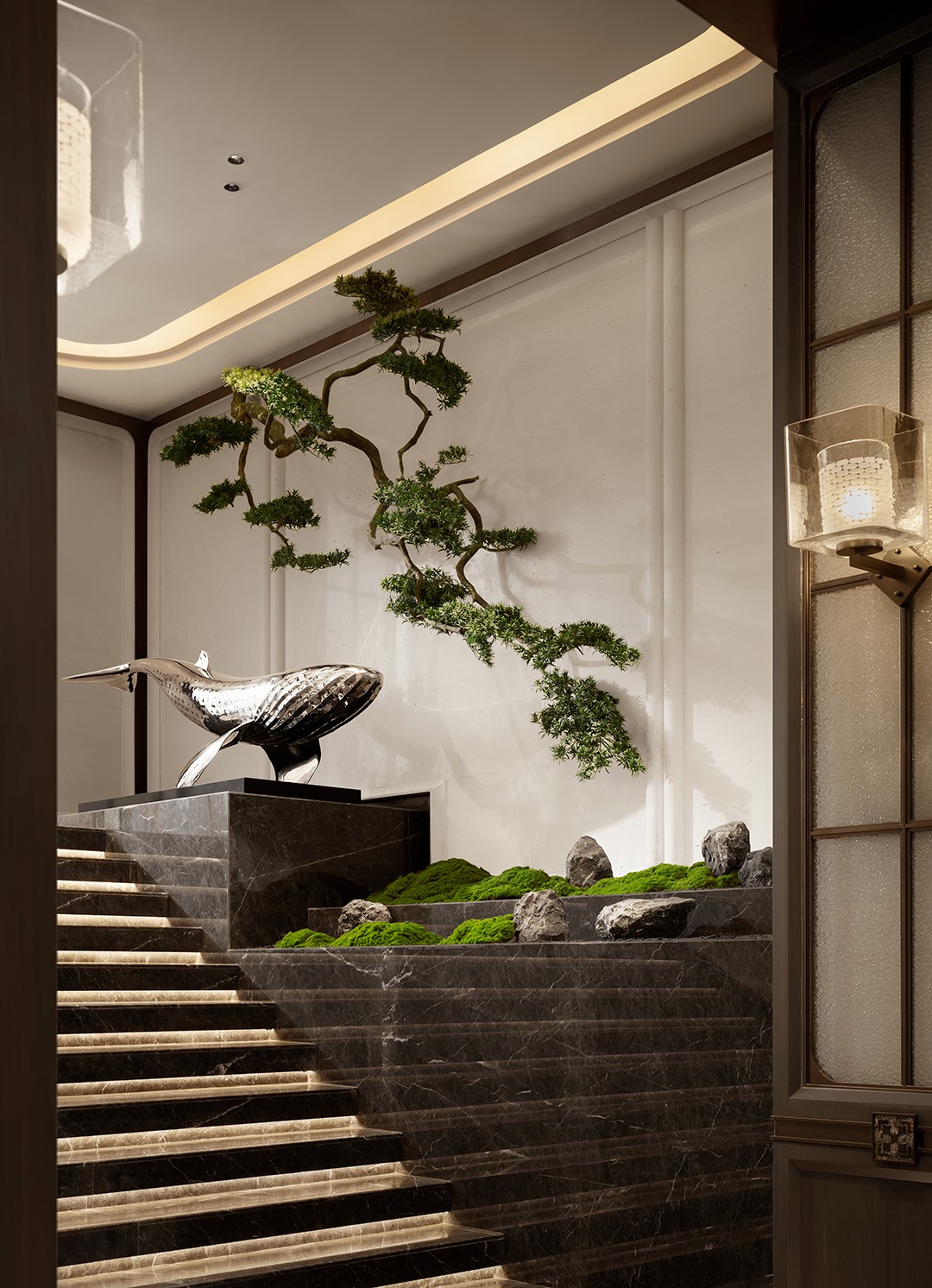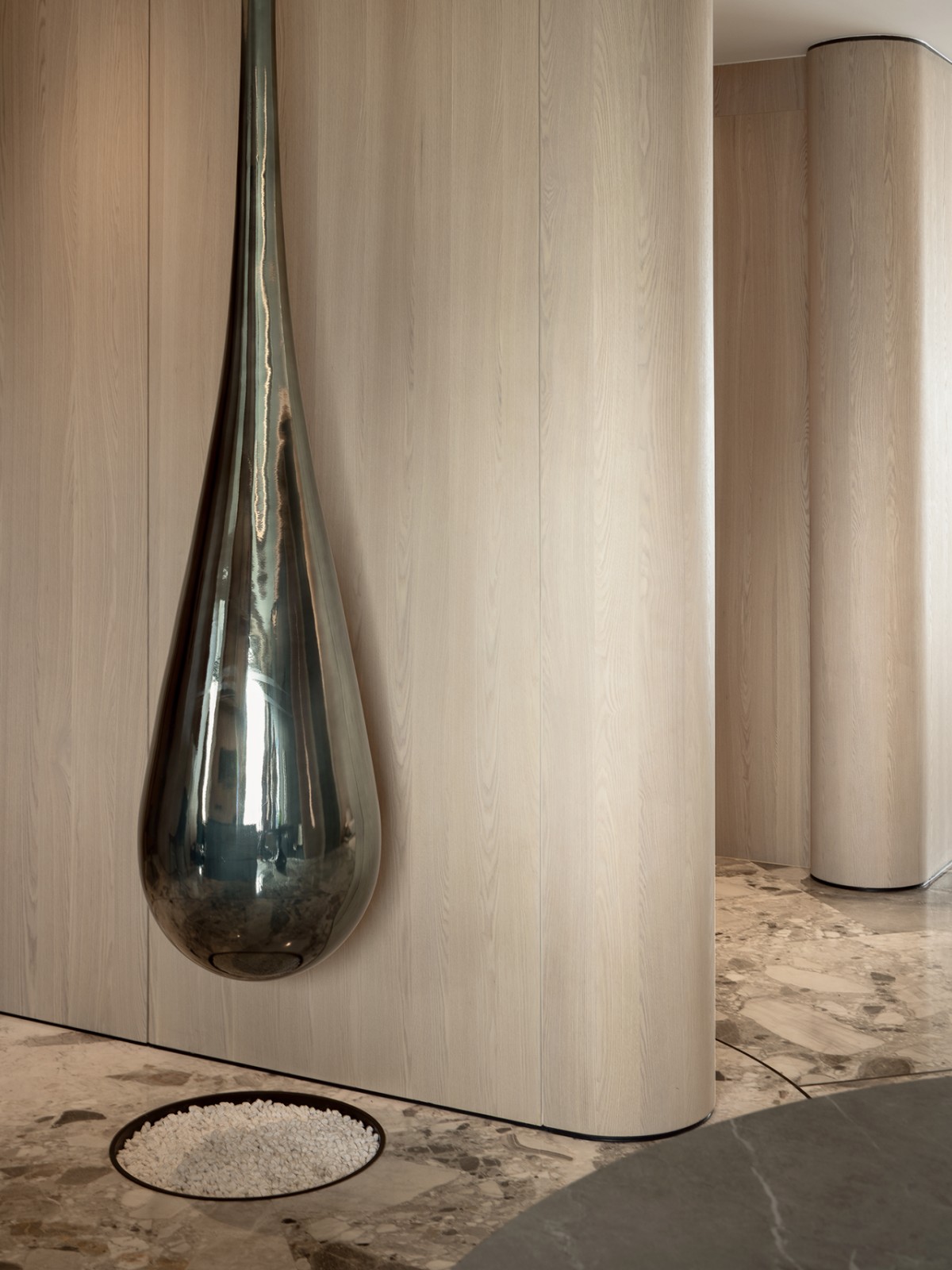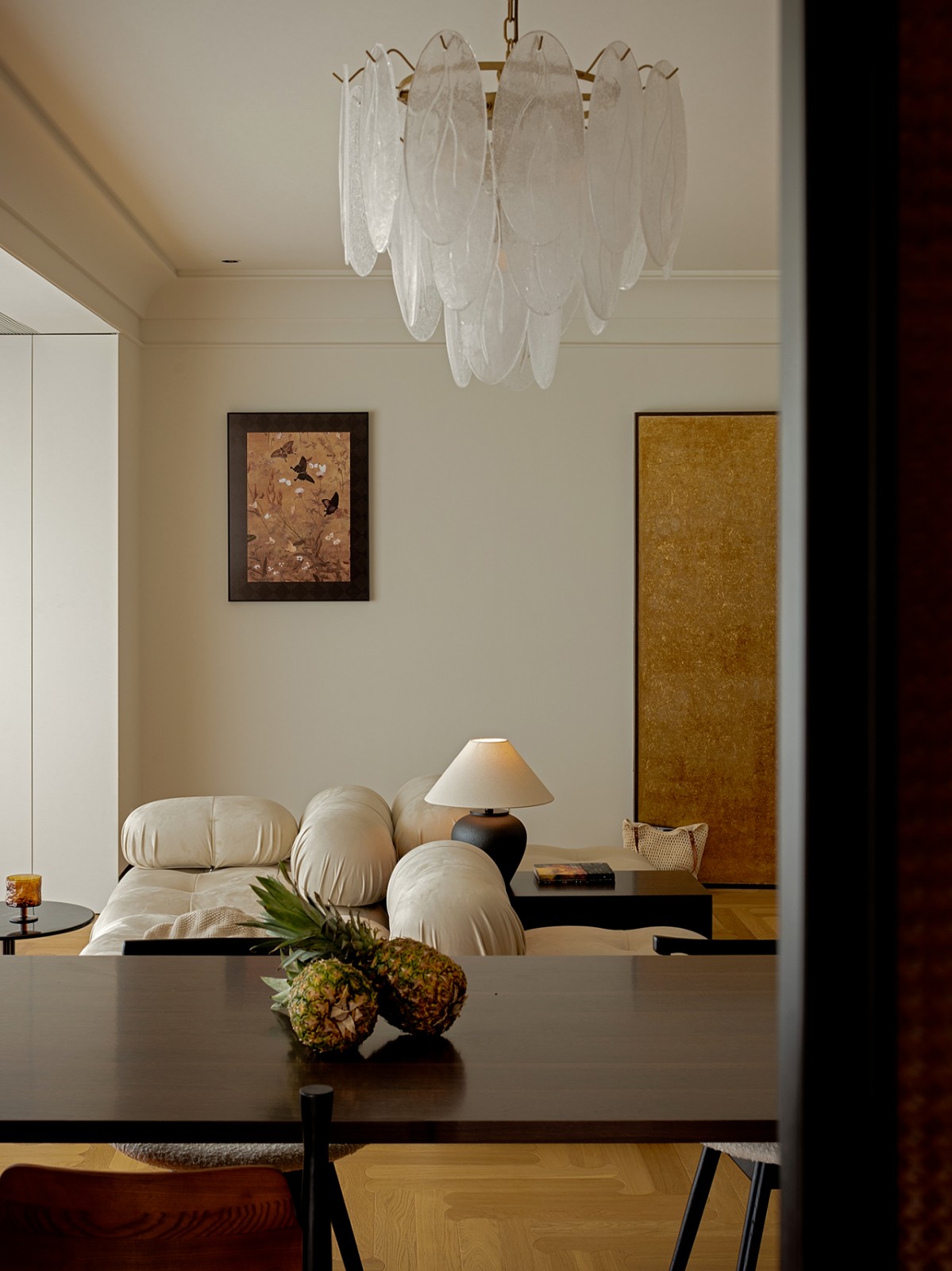Studio House on Chapálico Sea ARS° Atelier de Arquitecturas
2014-06-04 01:00
© Onnis Luque
欧尼斯·卢克


架构师提供的文本描述。为一位城市地理学家和建筑学专家建造一座房子,这意味着我们有机会尝试一种接近建筑项目的特定方式。该遗址位于拉弗洛雷斯,从二十世纪中叶起,以哈利斯科查帕拉湖旁边的花园城市的方式建造,长期以来,由于气候温和,那里一直是许多外国人的避风港。这个社区有两个主要特征:城市空间具有很大的价值,因为它的街道部分,它与周围的景观-山和湖-相互作用-还有植被;然而,在那里建造的建筑是不相关的,因为它是从纯粹的风格对当地传统的重新诠释中得到的。因此,我们提出了一个能够与其自然环境和文化环境密切相关的项目,即使没有直接的察帕拉湖景观。
Text description provided by the architects. Building a house for an urban geographer and expert on architecture and the city meant for us the opportunity to experiment with a certain way of approaching the architecture project. The site is located in La Floresta, a neighborhood from the mid-twentieth century built in the manner of a garden city next to Lake Chapala in Jalisco, which since long ago has been a retreat for many foreigners because of the mild climate. This neighborhood has two main features: the urban space is of great value because of the section of its streets and its interaction with the surrounding landscape - mountain and lake - and also because of the vegetation; however the architecture that has been built there is irrelevant since it has been made from purely stylistic re-interpretations of the local tradition. Thus we proposed a project that was able to relate deeply with its natural and cultural environment even without direct views of Lake Chapala.
Ground Floor Plan










建筑是否有可能唤起其景观的形式?
Is it possible for an architecture to evoke the formality of its landscape?
© Onnis Luque
欧尼斯·卢克


查帕拉湖是数千年前火山活动形成的地方。周围的山脉出现了,分割了一个现存的峡湾,导致了湖的形成。这就是为什么可以沿着科利马的方向观察从查帕拉到太平洋的一系列湖泊和泻湖。那里发生的好天气与水库及其产生茂密植被的能力有关。在雨季,人们可以看到水是如何从地下流向地表的,这就显示了地下水和地表径流量一直在湖的方向上发生的情况。
Lake Chapala is a site formed by volcanic activity thousands of years ago. The surrounding mountains emerged segmenting an existing fjord leading to the formation of the lake. That is why it is possible to observe a series of lakes and lagoons from Chapala to the Pacific Ocean in the direction of Colima. The great weather that occurs there is related to the reservoir and its ability to produce lush vegetation. During the rainy season it is possible to see how the water comes from underground to the surface, which shows the underground and surface runoff that happen all the time in the direction of the lake.


我们项目的理念是建立一个能够唤起这个自然循环的家园,并为其优越的气候和景观服务。
The idea of our project is to build a home that is able to evoke this natural cycle of the site and serves its privileged climate and landscape.
© Onnis Luque
欧尼斯·卢克










这就是为什么房子的屋顶有能力收集雨水,并把雨水引到房子前面反射池的人行道上。因此,在雨季,雨水会显示在房子的外部地面上,就像它在周围的景观中一样。为了完成这个“领土建设”,我们在倒影池旁边放了一个大种植园:一片郁郁葱葱的森林,和后面的花园一起用绿色植物环绕着房子的内部。
This is why the roofs of the house have the ability to collect rainwater and lead it down to the pavement of the reflecting pool in front of the house. Thus, during the rainy season the rainwater is displayed in the house emerging from the exterior ground as it does in the surrounding landscape. To complete this "territorial construction", we place a large planter next to the reflecting pool: a lush forest which together with the rear gardens surround the interior of the house


该房屋的设计包括白天地区利用南北阳光,是从前面的网站倒退,从而出现一个前围护。房间的体积垂直于前一个房间,这样也可以得到最好的阳光,但却站在西边,以避免下午的阳光照射。该项目的最后一块是垂直于公共区域的工作室,在餐厅区域形成一个区域空间。
The design of the house comprises the day area taking advantage of the north-south sunlight, and is setback from the front of the site so that a front enclosure occurs. The volume containing the rooms is placed perpendicular to the previous, so as to avail the best sunlight as well, but stands at the western boundary to avoid the afternoon sun. The last piece of the project is the studio that is perpendicular over the public area, producing a space in section with the dining area.
© Onnis Luque
欧尼斯·卢克


该工作室的悬臂位置产生了一个露台在下面有能力投下一个强大的阴影,确保该地区的凉爽气候在的网站后面。最后的想法是理解这个项目,它不仅仅是一个有花园的家,它是一个有房子的花园。其目的是创造一个被绿色植物包围的空间,室内由光线决定,通过屋顶的结构缝隙过滤:一系列凹形光束,在它们之间捕捉雨水和光线,形成一个不断变化的空间。
The cantilever placement of the studio produces a terrace underneath that has the ability to cast a powerful shadow, ensuring a cool climate for that area at the back of the site. The final idea is to understand the project beyond a home with a garden, it is a garden with a house. The aim was to produce a space surrounded by greenery, with the interior determined by light filtered through the structural gaps of the roof: a series of concave beams that capture rainwater and light between them to produce a ever-changing space.


作为这个地方文化的支柱,我们设计了两个元素。在白天地区的整个南面,有一个格子,上面有一棵名为PaloDulce的树的枝条。晶格降低了太阳辐射,产生了一个特殊的大气内部,它也有能力折叠,以操纵所述内部空间的亲密程度。这个格子是由该地区的一名渔民编织的,它说明了该地区仍然存在的工艺知识。第二个要素是围绕着房屋前围护的石墙。这是一位来自该地区的石匠做的,让人想起在马福拉发现的人行道,这是一个湖上的岛屿,见证了哥伦布前时代无数的故事。
As an anchor to the culture of the place we designed two elements. For the entire southern facade of the day area, a lattice woven with the branches of a tree called Palo Dulce. The lattice reduces solar radiation and produces a particular atmosphere inside, it also has the ability to fold to manipulate the degree of intimacy of said interior space. The lattice was woven by a fisherman from the area; it accounts for craft knowledge still found in the region. The second element is the stone wall surrounding the front enclosure of the house. It was done by a mason from the area and reminds one of the pavements found in Mescala; an island on the lake that has witnessed countless stories from pre-Columbian times.
© Onnis Luque
欧尼斯·卢克




































































Architects ATELIER ARS°
Location Ajijic, Mexico
Category Houses
Project Architects Alejandro Guerrero Gutiérrez, Andrea Soto Morfín
Project Area 234.0 m2
Project Year 2013
Photography Onnis Luque
Manufacturers Loading...
























